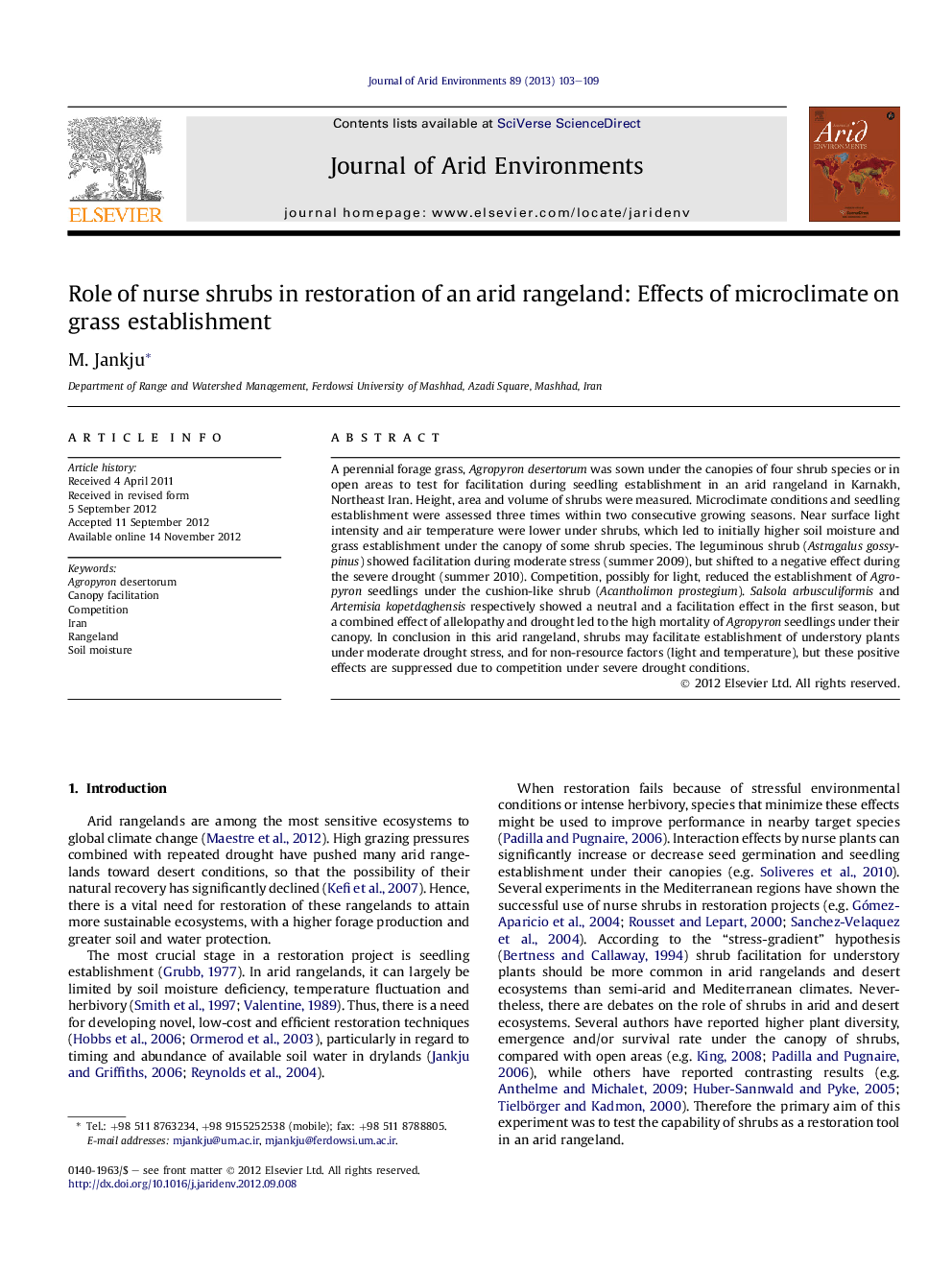| Article ID | Journal | Published Year | Pages | File Type |
|---|---|---|---|---|
| 4393232 | Journal of Arid Environments | 2013 | 7 Pages |
A perennial forage grass, Agropyron desertorum was sown under the canopies of four shrub species or in open areas to test for facilitation during seedling establishment in an arid rangeland in Karnakh, Northeast Iran. Height, area and volume of shrubs were measured. Microclimate conditions and seedling establishment were assessed three times within two consecutive growing seasons. Near surface light intensity and air temperature were lower under shrubs, which led to initially higher soil moisture and grass establishment under the canopy of some shrub species. The leguminous shrub (Astragalus gossypinus) showed facilitation during moderate stress (summer 2009), but shifted to a negative effect during the severe drought (summer 2010). Competition, possibly for light, reduced the establishment of Agropyron seedlings under the cushion-like shrub (Acantholimon prostegium). Salsola arbusculiformis and Artemisia kopetdaghensis respectively showed a neutral and a facilitation effect in the first season, but a combined effect of allelopathy and drought led to the high mortality of Agropyron seedlings under their canopy. In conclusion in this arid rangeland, shrubs may facilitate establishment of understory plants under moderate drought stress, and for non-resource factors (light and temperature), but these positive effects are suppressed due to competition under severe drought conditions.
► Aridland shrubs showed slight facilitation in spring but strong competition at summer. ► Facilitation was for light and temperature but competition for water and nutrients. ► Leguminous and allelopathic shrubs had respectively highest and lowest nursing effects. ► Effects of abiotic factors were more important than morphological traits of shrubs.
